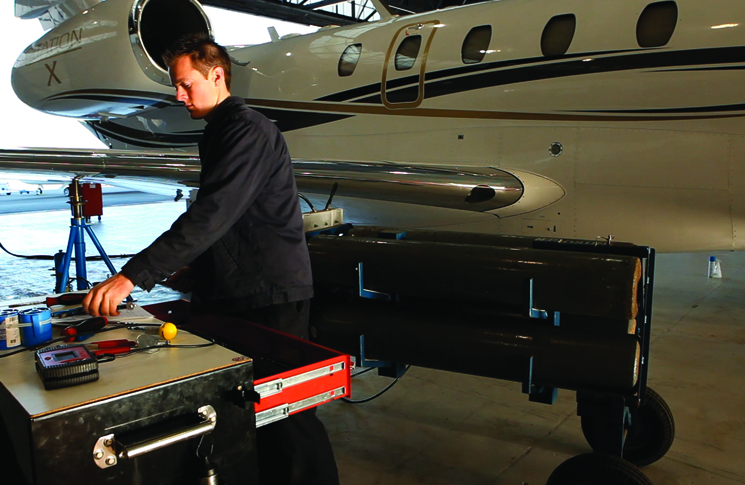- Aircraft washers were mainly identified as AN960-XX. The numbering system has been superseded to NAS1149-XX. If you are looking for an AN960-416L, what would be the equivalent in the NAS1149 range?
- NAS1149F0463P
- NAS1149F0463N
- NAS1149F0432P
- NAS1149G0432P
- Describe the following washer part number: NAS1149F0332P
- an aluminium washer, .032′ thick and silver-plated
- a carbon steel washer, .032′ thick and cadmium-plated
- carbon steel washer, .032′ thick and silver-plated
- an aluminium washer, .032′ thick and cadmium-plated
- What does the letter ‘C’ designate about a washer, in part number AN960C416?
- manufactured from corrosion-resistant steel
- is carbon steel and cadmium-plated
- is thinner than a standard washer (light)
- is manufactured from carbon steel
- An AN970 washer:
- has a larger diameter than the AN960 equivalent, with a hole in the centre that fits the corresponding AN bolt
- has a smaller diameter than the AN960 equivalent, with a hole in the centre that fits a standard bolt diameter
- has a larger diameter than the AN960 equivalent and is twice the thickness for added strength
- has a smaller diameter than the AN960 equivalent, and is ideal for distributing the pressure of the bolt or screw
- A NAS1169 washer is:
- 100 degrees dimpled, is not structural and can be manufactured in carbon steel, corrosion-resistant steel or aluminium
- 100 degrees dimpled, is structural and can be manufactured in brass, corrosion-resistant steel or aluminium
- 100 degrees dimpled, is not structural and can be manufactured in brass, corrosion-resistant steel or aluminium
- 100 degrees dimpled, is structural and can be manufactured in carbon steel, corrosion-resistant steel or aluminium
- What do the initialisms MS, NAS and AN stand for when referring to aircraft hardware?
- military standard, national aircraft standard, American national
- military spec, national aerospace standard, Army-Navy
- military standard, national aerospace standard, Army-Navy
- military spec, national American standard, Army-Navy
- AN310 and AN320 are plain castellated nuts that:
- require to be loosely tightened until the split pin hole lines up
- are designed to be tightened to the correct torque and, if doesn’t line up with the split pin hole, to be tightened further to line up the holes
- are designed to be tightened to the correct torque then retained by a split pin (cotter pin)
- are designed for high torque application
- Slotted nuts and split pins are:
- usually used in tension applications
- always silver-plated
- always manufactured from stainless steel
- usually used in shear applications
- Tinnerman sheet metal nuts are commonly used on Cessna single-engine aircraft. They:
- can be used on structural and non-structural components
- may only be used in accordance with the approved data and typically are limited to non-structural applications
- are ideal for use on structural components
- always have a dark green finish
- Nyloc nuts such as MS21044N can be substituted for other types of locknuts:
- in engine bays
- in accordance with approved data
- on landing gear components
- where they are subject to high vibrations
- Does CASA’s ‘modular licensing’ option allow you to get a B1 subcategory ‘airframes’ modular licence without necessarily studying ‘engines and propellers’?
- Yes
- No
- LAME licences are issued under:
- Part 61 of CASR
- Part 42 of CAR
- Part 66 of CASR
- Part 30 of CAR
- You may need to level a light aircraft during maintenance in order to weigh the aircraft or adjust avionics. Where would you find the levelling point on the aircraft?
- the levelling point on single-engine aircraft is the upper door frame of the pilot’s door
- the levelling point on helicopters is the transmission deck 2 degrees nose down
- the levelling point varies for different types of aircraft and sometimes for different models of aircraft type and, thus, should be checked in the maintenance manual, flight manual or type certificate data sheet of the aircraft
- the levelling point on twin-engine aircraft is found by placing a spirit level across 2 specified screws on the side of the fuselage
To view the answers, go to the next page using the page navigation buttons below.





